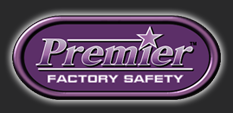An important part of any occupational safety and health plan involves setting clear, definable,
and measurable goals. These goals should help shape the direction of the company, from a safety
and health perspective, including what designations, if any, are on the horizon, the number of
workplace incidents expected for the year, and what changes will be made to improve OSHA and
other regulatory compliance.
Clarity is the most important part of the goals. Vague goals which can be interpreted in a
multitude of ways are nearly useless; if the intent is not clear, it will not be attained. And if the
intent is not achieved, then the actions were in vain.
Being able to define the goals is necessary because it is the only way to track progress and
determine if a goal has been achieved. Many goals will be incrementally achieved, so achieving
those incremental pieces should be accounted for. For instance, if your goal is to rewrite your
entire safety program, there may be a goal to rewrite a certain part (such as lockout tagout or
evacuation) by a specified date. This way, you can track the progress to these goals, rather than
trying to tackle the entire program overhaul at once.
And finally, measurable is important because you need to be able to track effectiveness. A goal
of a “safer” workplace is difficult to actually measure. What is “safer?” That can be something
different to everyone. Instead, setting a goal of “replace all safety goggles by June 1,” is a very
tangible and measurable goal. If there are 50 goggles, each goggle replace and logged can be
measured to allow you to know how much further you need to go to achieve the goal.
If you are in the process of setting safety goals and would like some help in setting or planning to
achieve them, please contact us. If you have anything else to add about safety goals, please leave
a comment.

Leave A Comment